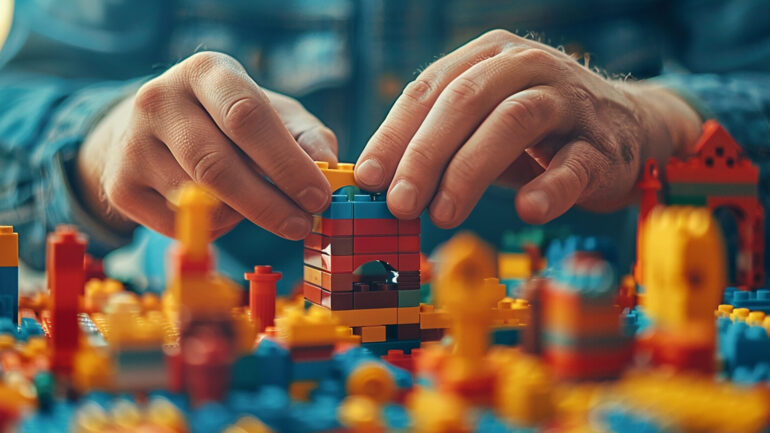Keeping Play Alive: How LEGO and Mattel Navigate the Digital Age

As children increasingly gravitate toward video games and mobile apps, the innovation strategies of these two iconic companies are redefining digital transformation – proving to be classic examples of how legacy enterprises have pivoted to stay relevant.
In an era where screens dominate children’s attention, toy manufacturers like LEGO and Mattel are redefining what it means to engage in physical play. Both companies have recognized the challenge of competing with the digital landscape while maintaining the timeless appeal of traditional toys. By innovating and adapting, they are ensuring that physical play remains relevant, fun, and integral to childhood development. The innovation strategies of these two companies are redefining digital transformation and are proving to be classic examples of how legacy enterprises have pivoted to stay relevant.
The Challenge of Digital Distraction
As children increasingly gravitate toward video games and mobile apps, traditional toy makers face the daunting task of capturing their interest. The global toy market, valued at $109 billion, is experiencing a significant shift as digital entertainment becomes more prominent. This change has compelled companies like LEGO and Mattel to rethink their strategies and embrace new forms of play.
LEGO’s Hybrid Play Model
LEGO has long been synonymous with creativity and imagination, and its response to the digital age reflects this legacy. Under CEO Niels B. Christiansen, LEGO has adopted a “hybrid play” approach, seamlessly blending physical and digital experiences. By partnering with popular platforms like Minecraft and Roblox, LEGO has created an ecosystem where children can engage with both the tangible and the virtual.
This strategy not only keeps LEGO relevant but also enhances its product offerings. For instance, LEGO sets that tie into digital games allow children to build physical models that correspond to their online adventures, fostering a deeper connection between the two forms of play. This integration encourages kids to step away from screens and engage in hands-on creativity, reinforcing the value of physical play.
Mattel’s Innovative Approach
Similarly, Mattel has embraced innovation to stay relevant in a digital-first world. The company has expanded its product lines to include interactive toys that incorporate technology, such as the Barbie “Hello Barbie,” which uses voice recognition to engage children in conversation. This blend of traditional play with modern technology captures children’s attention while encouraging imaginative play.
Mattel has also ventured into the digital realm with mobile apps and online games that complement its physical toys. For example, the Hot Wheels brand has launched augmented reality experiences that allow kids to race their cars in virtual environments while still engaging with the physical track sets. This dual approach not only keeps children entertained but also reinforces the idea that physical play can coexist with digital experiences.
The Importance of Playful Learning
Both LEGO and Mattel understand that play is not just about entertainment; it’s a crucial component of childhood development. Research indicates that play fosters creativity, problem-solving skills, and social interactions. By creating products that encourage collaborative play, these companies are helping children develop essential life skills. LEGO’s focus on building and creating allows children to explore their imaginations while developing fine motor skills and spatial awareness. Similarly, Mattel’s interactive toys promote critical thinking and communication, ensuring that children are not just passive consumers of content but active participants in their play experiences.
Fostering a Playful Culture
Beyond their products, both LEGO and Mattel cultivate a playful culture within their organizations. LEGO’s headquarters in Billund, Denmark, features a playful work environment designed to inspire creativity among employees. Christiansen emphasizes that fostering a playful atmosphere is essential for serving children effectively.
Mattel, too, encourages a culture of innovation and playfulness. The company invests in research and development to create toys that resonate with today’s children while remaining true to their brand heritage. By prioritizing creativity and collaboration, both companies attract top talent and ensure their products remain fresh and engaging.
Looking Ahead: The Future of Play
As the digital landscape continues to evolve, LEGO and Mattel are committed to finding new ways to keep physical play relevant. They recognize that children do not view physical and digital play as mutually exclusive; instead, they seamlessly transition between the two. By embracing this reality, both companies are positioned to thrive in an increasingly complex market.
In a world where screens are omnipresent, LEGO and Mattel are redefining play by blending traditional toys with modern technology. Through innovation, creativity, and a commitment to fostering meaningful play experiences, these companies are not just surviving; they are thriving, ensuring that physical play remains a vital part of childhood for generations to come.


